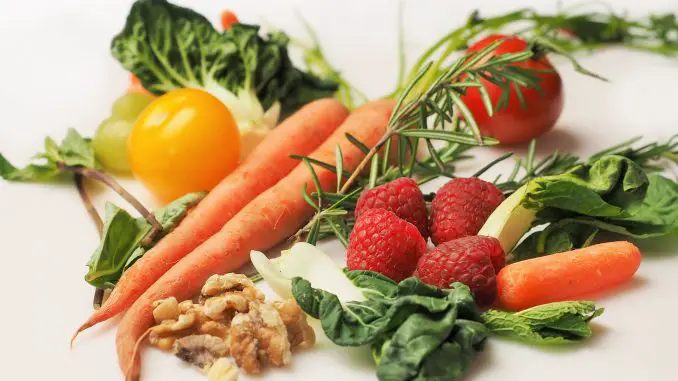
Did you know that about 25 percent of greenhouse gas emissions occur in the production of the food we eat?
Hopefully, there is great potential to drastically reduce emissions through some simple changes to what we eat.
At the same time, it becomes both useful and good.
There are also foods you can eat that are actually GOOD for the environment. More on that soon.
But first we need to complicate it all a bit. By emitting greenhouse gases (especially carbon dioxide, methane, and nitrous oxide) we make sure that the earth’s atmosphere is slowly but surely heated up. But climate change is just one of several environmental problems. And agriculture affects the environment in many ways, not just through greenhouse gas emissions.
A serious environmental problem is eutrophication which leads to algal blooms and bottom death in the Baltic Sea, which is due to the leakage of nutrients from the agricultural land. Then we have the use of pesticides and resources such as soil, energy, and water, which we must also be careful about. Deforestation in tropical areas is another serious problem driven by the demand for animal feed and palm oil.
Many times the various environmental problems are related. This means that if we make a choice for reduced climate impact, we will improve in several other environmental areas at the same time. But there are some things to watch out for – sometimes when we make choices to reduce the climate impact, we aggravate something else. Therefore, we need to think about more than just the climate impact, but it does not have to be that difficult.
The most important thing to keep in mind is to reduce the amount of meat that you consume, especially if you are a large consumer (if you eat meat every day or several times a day). Then you will drastically reduce your climate impact. What meat should we cut back on then?
If we only look at the climate impact, it is meat from ruminant animals that we should reduce, such as beef and lamb, because of methane emissions. But if we instead look at the use of pesticides, it is chicken and pork we should reduce, as these animals eat more imported soy where the use of pesticides is great. A strategy for dealing with these advantages and disadvantages of different types of meat is therefore to reduce all types of meat.
Food to reduce
▪ Meat from ruminant animals, such as beef and lamb.
▪ Chicken and pigs, because they eat highly imported soy where pesticides have been used.
▪ Cows and sheep mainly eat grass, which means they can utilize a resource that we humans cannot eat directly, while pigs and chicken eat things that we could eat directly instead (for example cereals, beans and rapeseed). ).
Growing grass at regular intervals in the fields and not just growing grain year after year is also good for soil fertility.
▪ Cheese is also climate-impacting.
▪ Fish and products that come from areas with a lack of water or that risk deforestation, such as avocado, coconut and almonds.
What should you replace the meat with?
Cheese is like climate-sensitive meat so be careful with the halloumi. The fish is also problematic – the wild fish is almost endless and the cultivated eats wild-caught fish and farmed feed that causes environmental problems.
Instead, add more vegetables (beans, peas and lentils) to the meal. Legumes are fantastic foods – protein-rich, saturating, healthy and climate-smart. It may take some time to learn to cook and to get used to eating – but don’t give up! By replacing half of the meat with vegetables, you reduce the risk of several diseases and reduce your climate impact from food by as much as 20 percent.
Good food for the environment
▪ Vegetables (beans, peas and lentils) for the meal. Legumes are rich in protein, saturating, healthy and climate-smart. Today, there are a plethora of varieties, from dry beans and peas that you can cook yourself, to pre-cooked beans on tetra, to good ready-made dishes, to products you can use in your favorite recipes such as tofu, mutton, and stew.
▪ Fruits, vegetables and other vegetable foods. Locally produced fruits and vegetables such as apples, pears, carrots, parsnips, onions, cabbage, kale, red cabbage, cauliflower and broccoli. Preferably organic, you also reduce the use of pesticides.
Fruits, vegetables and other vegetable foods are generally climate-smart foods, but avoid products that come from areas lacking water or that risk deforestation, such as avocado, coconut and almonds. Instead, invest in locally produced fruits and vegetables. Although organic, the use of pesticides is also reduced.
Of course, it is also important not to throw away food – to avoid unnecessary emissions. For both the climate and your health, it is of course good not to eat too much and reduce the uselessness like alcohol, sweets and soft drinks.
Finally, was a demanding and questionable consumer and citizen. Write to the food industry and make demands on fossil-free and climate-smart production, ask in your store what the best choices for the environment are, and vote for politicians who drive powerful environmental policies. It is industry, trade and politics that have the opportunity to bring about large-scale change, but we consumers must press!
Leave a Reply